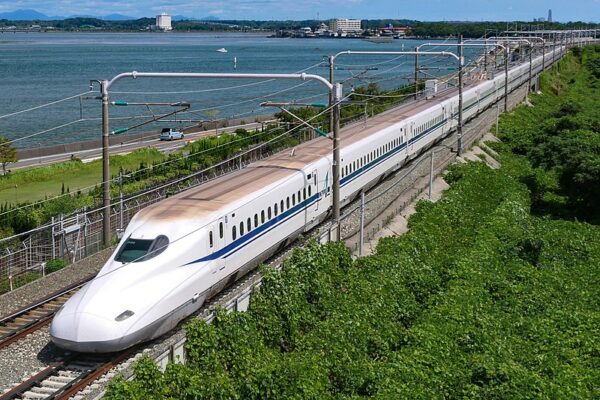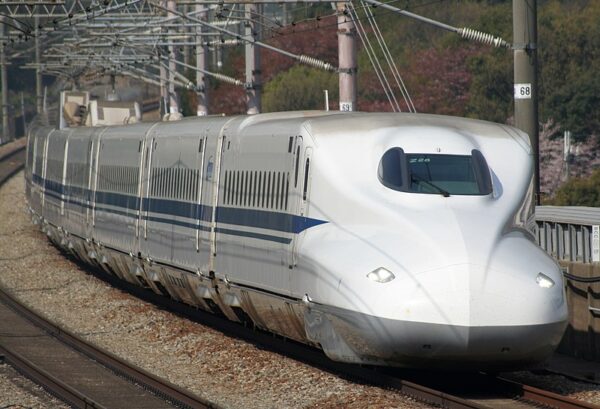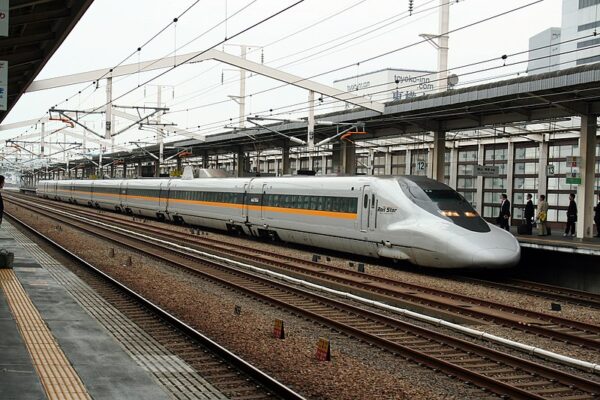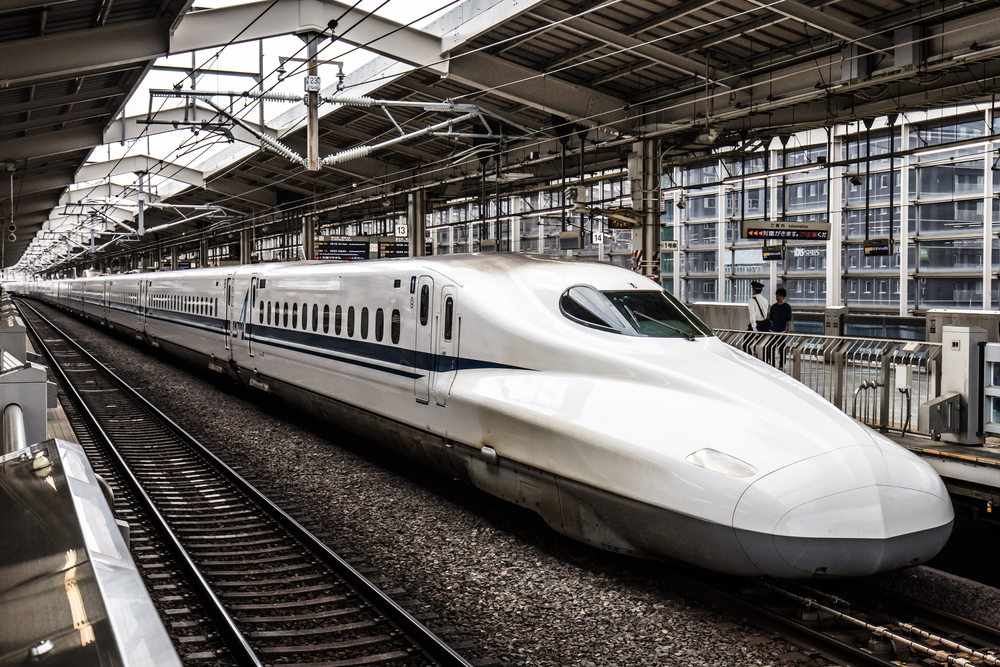If you’re ever in Japan, you should definitely check out the different types of shinkansen trains. They’re really something to see! In this article, we’ll be taking a look at the three most popular types of shinkansen trains and what makes them unique. We’ll also offer some tips on how to get the most out of your trip by riding on a shinkansen train.
Contents
First up is the bullet train
For many travelers, a trip to Japan isn’t complete without taking the famous Shinkansen, or bullet train. These trains can whisk passengers across the country at speeds of up to 320 kilometers per hour. But with three types of Shinkansen on offer—Nozomi, Hikari, and Kodama—it can be hard for foreign travelers to understand the differences between them. In this article, we’ll explain in detail what makes each type of train unique and which one is best suited for visitors to Japan.
Overview of Shinkansen Types
The Shinkansen is the Japanese high-speed railway system, and it has become a symbol of modern Japan. It connects major cities throughout the country, with trains running at up to 320 kilometers per hour (200 miles per hour). Trains on this network come in three types: Nozomi, Hikari, and Kodama. Each one offers different speeds, prices and services that may accommodate various needs of travelers.
Nozomi is the fastest service and is optimal for those who need to cover long distances quickly. These are cutting edge trains with a top speed of 300 kilometers per hour (186 miles per hour) which make few stops along the route. However, these trains do not stop at all stations, so travelers should confirm their destination before boarding.
Hikari is considered the mid-level option between Nozomi and Kodama services. These are more moderately priced than Nozomi but still offer comfortable travel. The trains run at a maximum speed of 270 kilometers per hour (167 miles per hour) and make fewer stops than Kodama services but more stops than Nozomi.
Kodama is the slowest Shinkansen type but also the most accessible due to its wide coverage area; it makes all station stops along its route so travelers can get on or off anywhere they wish. Kodama trains can reach speeds as high as 200 kilometers per hour (124 miles per hour). They provide a relaxed atmosphere with ample legroom compared to other Shinkansen types since they stop more frequently than others.
Comparing prices and travel times for each service will be important when deciding which train type best suits foreign travelers’ needs in terms of budget and time constraints; however, making an informed decision usually comes down to understanding what each service offers in terms of amenities and convenience relative to price point.
Nozomi: The Fastest Shinkansen
Nozomi is the fastest type of Shinkansen service in Japan and offers travelers a speedy and convenient route for long-distance travel. It travels between major cities and stops at only the larger stations along its route. Nozomi services are operated by JR Central, JR West, JR Kyushu, and JR East lines.

Nozomi trains have the highest speed of all Shinkansen types, reaching up to 320 km/h (200 mph). This means that even long-distance trips can be completed in a relatively short amount of time. For example, the trip between Tokyo and Osaka on a Nozomi train will take around 2 hours 40 minutes.
The comfort levels on board a Nozomi train are also higher than other Shinkansen services since there is more space between seats and aisles compared to other services. Additionally, some trains also offer special seating areas for those who want more comfort during their journey. These include spaces such as “Green Seats” which provide more legroom and more privacy with partitioned walls between each seat.
Nozomi services also offer extra amenities such as Wi-Fi connections, power outlets for charging devices, vending machines for snacks and drinks, toilets with washbasins, and luggage racks for large bags or suitcases. All these features make it an ideal choice for foreign travelers who want to get from one place to another quickly and comfortably.
Hikari: Well Balanced Speed and Comfort
The Hikari Shinkansen is a great choice for foreign travelers looking for an optimal balance between speed and comfort. It stops at more stations than the Nozomi, which makes it easier to access some of Japan’s smaller towns and cities. Additionally, the fares are significantly cheaper than those of the Nozomi.

The Hikari is most commonly used for travel within Honshu – Japan’s main island – but it also operates on other routes such as the Hakata-Kokura route between Fukuoka and Kitakyushu in Kyushu. The average top speed of the Hikari is approximately 240 km/h, making it slower than the Nozomi service but still very fast in comparison to many other conventional trains.
Passengers travelling on the Hikari enjoy comfortable seats with generous legroom, and some of its carriages may even be carpeted. The seating arrangement varies depending on train type; most offer both face-to-face and side-by-side seating configurations. Most Hikari services are equipped with vending machines serving hot beverages, snacks and meals such as bento boxes, allowing passengers to eat onboard if desired.
Hikari tickets can be purchased from ticket machines or ticket counters at major JR railway stations throughout Japan. Passengers can also book their tickets online through various travel agencies or directly from JR West’s official website beforehand to save time during their journey.
For foreign travelers who are looking for a reliable way to get around that offers a good balance between speed and comfort, the Hikari Shinkansen is an excellent option for exploring Japan quickly and conveniently.
Kodama: Slower but More Accessible
The Kodama Shinkansen is the slowest of the three types of service available on Japan’s high-speed rail network, but it is also the most accessible and convenient for foreign travelers. It makes all local stops along its route, making it easy to access smaller cities and towns that are not served by other services. Since Kodama is slower than Nozomi and Hikari, fares are priced lower.

Kodama trains offer amenities similar to those found in the faster services like comfortable seating, vending machines and toilets. However, the cars may be more crowded during peak travel times due to more frequent stops and less frequent service. There are also fewer reserved seats available on Kodama trains compared to the other two services, so travelers should plan accordingly if they want to make sure they have a seat.
In addition to convenience and cost savings, another benefit of taking a Kodama Shinkansen is that it gives foreigners an opportunity to experience some of Japan’s stunning countryside scenery at a slower pace. The views from the window can be quite beautiful as these trains move through lush mountains and picturesque villages.
For those who are primarily interested in saving time and money during their travels in Japan, taking a Kodama train may be the best option since it offers both affordability and accessibility. Although it is slower than other services on the Shinkansen network, it still gets passengers from point A to B quickly and conveniently without sacrificing comfort or amenities.
Comparing Prices and Travel Times for Each Service
When comparing the prices and travel times for each of the three types of Shinkansen services, there are some important factors to consider. The Nozomi is the fastest type of Shinkansen, with a maximum speed of 300km/h and an average trip time of 2 hours and 30 minutes. This makes it ideal for short trips between major cities, such as Tokyo to Osaka. However, it tends to be more expensive than the other two types, with tickets ranging from 8,000-14,000 yen depending on distance.
The Hikari service is slightly slower than Nozomi, but provides a good balance between speed and comfort. Its maximum speed is 270km/h and its average trip time is around 3 hours. Tickets for this service usually cost between 7,000-10,000 yen depending on distance.
Lastly, Kodama offers a slower service than either Nozomi or Hikari at a maximum speed of 200 km/h and an average travel time of 4 hours or more. The biggest advantage of Kodama is that it stops at all the stations along the way which makes it easier to access smaller cities or towns that aren’t served by the faster services. The ticket price for Kodama is typically around 5,000-7,500 yen depending on distance.
In conclusion, when planning your Shinkansen journey as a foreign traveler in Japan you should take into consideration your budget and destination: if you’re looking to go as quickly as possible then Nozomi will be best suited for you; however if you have limited funds or need to make stops along the way then Hikari or Kodama may be better options for you.
Choosing the Best Shinkansen for Foreign Travelers
When considering which Shinkansen to take for a foreign traveler, the main factors to consider are speed, comfort, accessibility and cost. Nozomi is the fastest service and offers the best comfort in terms of amenities, but it is also the most expensive option. Hikari has a good balance between speed and comfort, but can be more expensive than Kodama services if traveling during peak times. Kodama may not be as fast or luxurious as other services, but it is the most accessible as it stops at all stations along its route.
When comparing prices and travel times for each service, travelers should first determine their budget and itinerary. For example, if time is of the essence then taking Nozomi would be faster while also offering access to more amenities than other services. On the other hand, if travelers are on a tight budget then Kodama might be their preferred choice as it can offer significant savings over other train services. In addition, Kodama services often connect with regional trains which can provide access to smaller towns and cities that are not served by other Shinkansen lines.
Travelers should also keep in mind that there may be special discounts available for foreign visitors such as discounted fares for certain routes or tickets for multiple days of travel. These discounts could potentially offset some of the costs associated with taking a higher-level Shinkansen service such as Nozomi or Hikari. Additionally, depending on individual itineraries some routes may require transfers between different Shinkansen lines which could add time to journeys when compared to direct services only available with higher class trains like Nozomi or Hikari.
Ultimately when deciding which Shinkansen to use for foreign travel the best option depends on individual budgets and timetables. For those looking for speed and comfort Nozomi or Hikari are likely your best bet although they will often come at a higher cost than Kodama services. However if you’re simply looking to get from point A to point B within Japan then Kodama may serve your needs just fine while helping you save money at the same time.
For foreign travelers looking to experience the famous Shinkansen, the Nozomi offers the fastest travel times and is ideal for those with a limited amount of time. The Hikari provides a well balanced speed and comfort that can suit all travelers’ needs. The Kodama is slower, but allows for more stops along the route, providing easier access to different cities. When choosing a service, it is important to compare prices and travel times in order to find the best deal. Ultimately, the choice of which Shinkansen service to take will be based on personal preferences, budget and desired trip duration. For an unforgettable journey through Japan’s beautiful countryside, the Shinkansen has something to offer everyone!
